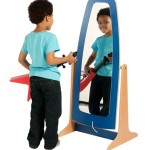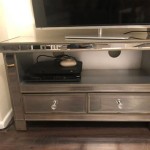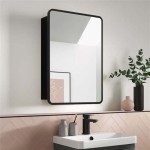How to Mirror iPad Without WiFi
Mirroring an iPad screen to another device, such as a television, projector, or computer monitor, can be incredibly useful for presentations, collaborative work, or simply enjoying content on a larger display. While many screen mirroring solutions rely on a shared WiFi network, there are several methods to achieve this without WiFi. These methods utilize wired connections or alternative wireless protocols, catering to situations where WiFi is unavailable or unreliable. This article outlines several techniques for mirroring an iPad screen without a WiFi connection.
Using a Wired Connection with an HDMI Adapter
The most reliable method for mirroring an iPad without WiFi is to use a wired connection. This typically involves utilizing Apple's Lightning Digital AV Adapter (for older iPads with a Lightning port) or a USB-C Digital AV Multiport Adapter (for newer iPads with a USB-C port). These adapters allow connecting the iPad to an HDMI-compatible display.
The procedure is relatively straightforward. First, acquire the appropriate adapter for the iPad model. These adapters are readily available from Apple and most electronics retailers. Ensure the adapter supports both HDMI output and, ideally, a charging port to prevent the iPad's battery from depleting during extended mirroring sessions. Connecting the adapter is as simple as plugging it into the iPad's Lightning or USB-C port. Then, connect an HDMI cable from the adapter to the HDMI input on the target display, whether it's a television, projector, or monitor. Power on the display and select the correct HDMI input channel.
Once connected, the iPad's screen should automatically mirror to the external display. The adapter transmits both video and audio signals, providing a complete mirroring experience. This method offers a stable and high-quality connection, free from the latency and interference that can sometimes plague wireless mirroring solutions. It is particularly suitable for presentations, watching videos, or playing games where responsiveness is critical.
Troubleshooting is usually minimal with wired connections. If the screen doesn't appear immediately, ensure that the HDMI input on the display is correctly selected. Check the connections on both the iPad and the display to ensure they are secure. If the issue persists, try restarting both the iPad and the display. Occasionally, a faulty HDMI cable can be the culprit, so testing with a different cable may resolve the problem.
One notable advantage of using a wired HDMI connection is its inherent security. Since the signal is transmitted directly through a physical cable, there is no risk of unauthorized access or interception, unlike some wireless mirroring methods. This makes it an ideal solution for situations where data security is paramount, such as confidential business presentations.
However, wired connections do have limitations. The iPad is physically tethered to the display, restricting movement and potentially creating a tripping hazard. The length of the HDMI cable also imposes a limit on the distance between the iPad and the display. Despite these limitations, the reliability and security of a wired HDMI connection make it a preferred choice for many scenarios where WiFi is unavailable or undesirable.
Utilizing a USB Connection for Screen Sharing on a Computer
Another method to mirror an iPad screen without WiFi involves connecting the iPad directly to a computer via a USB cable. This approach doesn't necessarily mirror the screen onto a separate display, but it allows viewing and interacting with the iPad's screen on the computer itself. This is useful for tasks like recording the iPad's screen, troubleshooting issues, or controlling the iPad from a computer.
Several software options facilitate screen mirroring via USB. One popular choice is QuickTime Player, a built-in application on macOS. To use QuickTime Player, connect the iPad to the Mac using a USB cable. Open QuickTime Player and, from the "File" menu, select "New Movie Recording." In the recording window, a small arrow next to the record button allows selecting the iPad as the camera source. This will display the iPad's screen in the QuickTime Player window, effectively mirroring it on the computer.
For Windows users, similar software solutions are available. Many third-party screen mirroring applications can establish a USB connection with the iPad and display its screen on the computer. Some of these applications also offer additional features like screen recording, screenshot capture, and remote control of the iPad. Examples include iTools, Apowersoft Phone Manager, and LonelyScreen. The specific steps for each application vary, but generally involve installing the software on the computer, connecting the iPad via USB, and enabling USB debugging in the iPad's settings, if prompted.
USB mirroring provides a stable and direct connection, reducing latency and ensuring a clear image. It is particularly useful for developers testing iPad applications, educators demonstrating iPad functionalities, or anyone who needs to interact with the iPad screen on a computer. Screen recordings generated through USB mirroring can be used for creating tutorials, presentations, or documenting app usage.
One potential drawback of USB mirroring is the reliance on specific software. Compatibility issues may arise if the software is not up-to-date or if the iPad's iOS version is not supported. Additionally, some third-party applications may require purchasing a license for full functionality.
Security considerations are generally minimal with USB mirroring, as the connection is direct and does not involve any network communication. However, it is important to use reputable software from trusted sources to avoid malware or security vulnerabilities. Always download and install software from the official website of the developer to minimize the risk of compromised applications.
Exploring Bluetooth Screen Mirroring (Limited Functionality)
While Bluetooth is primarily known for audio connections and data transfers, it can also be used for rudimentary screen mirroring in certain limited scenarios. This method is not as robust or versatile as HDMI or USB connections, but it can be useful when other options are not available. The key limitation is the dependence on specific devices and apps that explicitly support Bluetooth screen mirroring.
Generally, Bluetooth screen mirroring is not a native feature of iOS. Devices typically need to be specifically designed to support it, or applications must incorporate it into their functionality. For example, some smart TVs or projectors might offer Bluetooth screen mirroring as an alternative to WiFi-based solutions like AirPlay. These devices would establish a Bluetooth connection with the iPad, allowing it to transmit its screen content.
The process typically involves pairing the iPad with the target device via Bluetooth. This is done through the iPad's Settings app, under the Bluetooth section. Once paired, the user would then need to launch a specific app on the iPad that supports Bluetooth screen mirroring and select the paired device as the output. The app would then encode and transmit the screen content over Bluetooth to the receiving device for display.
The primary advantage of Bluetooth screen mirroring is its independence from WiFi. It can be used in situations where a WiFi network is unavailable or unreliable. However, there are several significant disadvantages. The bandwidth of Bluetooth is considerably lower than WiFi or HDMI, resulting in lower image quality and potentially significant latency. This makes it unsuitable for demanding applications like gaming or streaming high-resolution video.
Furthermore, Bluetooth screen mirroring is often application-specific. It may not be possible to mirror the entire iPad screen; instead, only certain apps that support Bluetooth screen mirroring may be able to transmit their content. The compatibility of Bluetooth screen mirroring also varies widely depending on the devices and apps involved. It is essential to check the specifications of both the iPad and the target device to ensure they support Bluetooth screen mirroring and are compatible with each other.
Security considerations for Bluetooth screen mirroring are similar to those for other Bluetooth connections. It is crucial to pair the iPad only with trusted devices and to disable Bluetooth when not in use to prevent unauthorized access. Bluetooth connections are susceptible to eavesdropping and interception, although the risk is generally low if proper security measures are in place.
In summary, Bluetooth screen mirroring offers a limited and often unreliable alternative to WiFi-based or wired mirroring solutions. It is suitable only for specific scenarios where WiFi is unavailable and only basic mirroring functionality is required. Due to its lower bandwidth and application-specific nature, it is not recommended for demanding applications or situations where high image quality and low latency are essential.
Ultimately, the optimal method for mirroring an iPad screen without WiFi depends on the specific requirements and available resources. Wired HDMI connections offer the most reliable and high-quality solution, while USB connections provide a stable way to view the iPad's screen on a computer. Bluetooth screen mirroring offers a limited alternative for specific devices and apps, but its performance and compatibility are often constrained.

How To Screen Mirror Iphone Ipad Easily Ultimate Guide

Can You Screen Mirror Without Wi Fi 2024 Answered

Simple Ways To Mirror Iphone Tv Without Wifi 6 Steps

Guide How To Mirror My Iphone Ipad

How To Use Airplay Apple Tv Without Wi Fi Full Guide

How To Screen Mirror Iphone Ipad Without Wifi 3 Ways Airplay Guru

Guide How To Mirror My Iphone Ipad

Simple Ways To Mirror Iphone Tv Without Wifi 6 Steps

How To Screen Mirror Without Wifi 2024 Updated

Best Ways To Mirror Iphone Pc Via Usb Without Wifi







